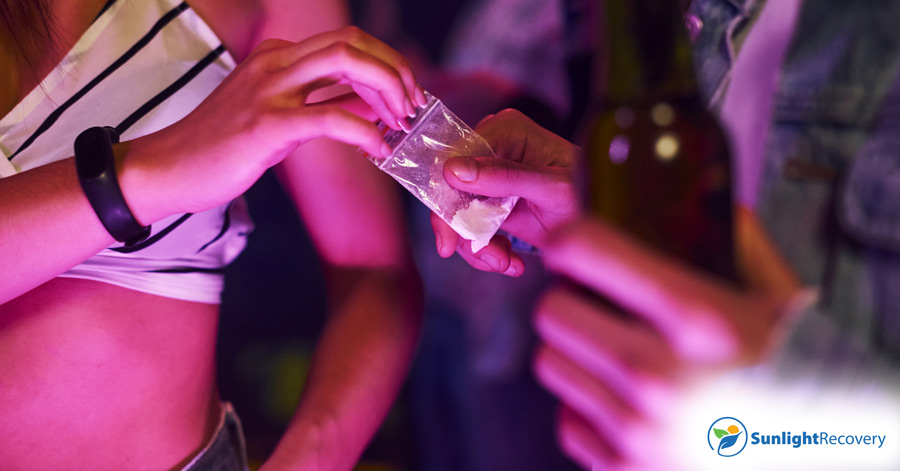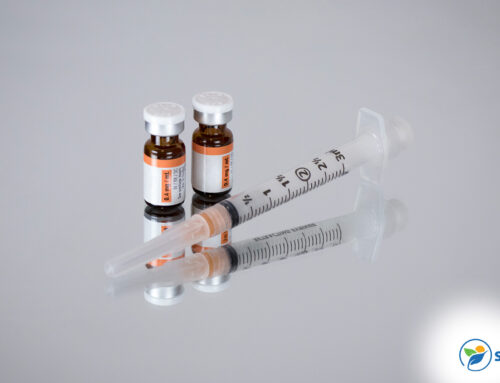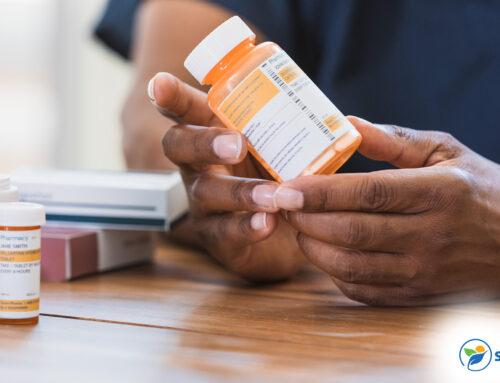There’s been a growing concern about the purity levels of ecstasy in the United States, a drug commonly used by people at parties and music festivals. Pure ecstasy is 100% MDMA with no additives, but in recent years, there’s been an increase in adulterants in the drug. In 2021, 55% of sold ecstasy was void of any MDMA.
Here, we’ll explore the factors that affect the purity of ecstasy, the risks associated with taking impure or adulterated ecstasy and how you can test ecstasy before use for harm reduction.
Ecstasy and Its Use as a Recreational Drug
Ecstasy, also called MDMA or Molly, is a popular recreational drug used to achieve feelings of euphoria, increased sociability and heightened sensory perception. The drug targets the brain’s neurotransmitters to release increased serotonin, dopamine and norepinephrine, enabling consumers to enhance their partying experience.
Ecstasy use has several adverse effects, such as hyperthermia, increased temperatures, dehydration and cardiovascular problems. However, impure ecstasy can be laced with dangerous adulterants, making it difficult to predict the health implications of consumption and worsening possible side effects.
But what does impure ecstasy mean, and how can you check its purity levels before use?
Understanding Purity Levels and Their Impact on Ecstasy Use
The purity of ecstasy refers to the percentage of MDMA present in a drug sample. The more MDMA present, the purer and stronger the drug.
Impure ecstasy with a reduced percentage of MDMA may contain a number of possible adulterants like amphetamines, caffeine, psychoactive substances and/or methamphetamine.
Because it’s challenging to know the exact composition of the ecstasy you’re consuming, you might experience unpredictable, dangerous effects that take a severe toll on your health and well-being. Consuming adulterated drugs will also alter the user experience and lessen the drug’s true effects.
Changes in purity levels can have significant implications for users, including increased overdose risks, adverse reactions and long-term health consequences. Understanding purity levels is crucial for anyone considering ecstasy consumption and can help individuals make informed decisions about their drug use.
Therefore, it’s essential to understand the risks of ecstasy use and take precautions to minimize harm, such as testing the purity of the drug before use and seeking help when needed. First, let’s look at the reasons behind these fluctuating purity levels.
Exploring the Reasons for Changes in Ecstasy Purity Levels
The purity levels of ecstasy can fluctuate due to a range of factors.
One reason is the illegal nature of the drug. Ecstasy is produced and sold in unregulated illicit drug markets, where there’s no quality control and the production process is often unhygienic and unsafe. This can lead to variations in the purity levels of the drug as producers cut corners to maximize profits, resulting in the addition of adulterants or the incomplete synthesis of MDMA.
Additionally, the demand for ecstasy and the availability of precursors used in drug production can also impact purity levels. Changes in demand or supply can result in producers using different methods or ingredients, which can affect the purity of the final product.
Finally, law enforcement efforts to disrupt the production and distribution of ecstasy can also lead to fluctuations in purity levels. For example, if the police crack down on an ecstasy production center, producers may rush to make and sell the drug, potentially resulting in lower quality and purity levels.
Overall, the illicit nature of the drug and illegal drug trafficking leads to fluctuating purity levels of Ecstasy and improper production methods, which make it dangerous for consumption and harmful to public health.
How to Test Your Ecstasy
If you’re an ecstasy user, it’s essential to test the drugs you buy for the purpose of harm reduction and to ensure you’re aware of what you’re consuming. At least 10 people died in the European country of Georgia after consuming ecstasy laced with fentanyl, a potent opioid even in the tiniest quantities.
You can test your ecstasy for adulteration using fentanyl test strips to determine if it has been laced with fentanyl in six simple steps:
- Purchase fentanyl test strips from a reputable supplier, online or at a harm reduction organization.
- Crush a small amount of your ecstasy pill or powder and mix it with water to create a solution.
- Dip the fentanyl test strip into the solution for about 15 seconds, ensuring the entire strip is submerged.
- Remove the strip and wait for the results. Most fentanyl test strips will show one or two lines to indicate the presence of fentanyl.
- One line means fentanyl isn’t present in the sample. Two lines mean fentanyl is present in the sample.
- Dispose of the test strip as directed by the manufacturer.
It’s important to note that fentanyl test strips are not foolproof and can only detect the presence of fentanyl. They can’t detect other adulterants or contaminants that may be present in your ecstasy.
Therefore, it’s recommended to use other harm reduction strategies such as testing your drugs with multiple testing methods like a purity evaluation test, starting with a small dose and never using alone or without a sober friend present.
Strategies for Reducing the Risks of Ecstasy Use
You can use various strategies to reduce the risks associated with ecstasy use, although the underlying risk of consuming an illicit hard drug shouldn’t be overlooked.
One harm reduction strategy is to test the purity of ecstasy before use. There are test kits available that can detect adulterants and provide an estimate of the MDMA content in a sample of ecstasy. Testing can help individuals make informed decisions about their drug use and avoid potentially harmful or unpredictable batches of ecstasy.
Another harm reduction strategy is to stay hydrated while consuming to avoid overheating. Ecstasy can cause dehydration and hyperthermia, leading to organ damage and other serious health consequences. It’s essential to drink plenty of water and take breaks from dancing or other physical activities to avoid overheating.
Of course, avoidance is another strategy that can effectively eradicate the risks of ecstasy use. This means choosing not to use ecstasy or other drugs altogether. Avoidance can be challenging, especially for individuals who use drugs frequently or feel peer pressure to use them. However, avoiding drug use can significantly benefit both your physical and mental health.
In addition to these strategies, seeking help and support is crucial for individuals who struggle with ecstasy use or addiction. This can include talking to a health care provider, contacting a support group or seeking treatment for substance use disorder at Sunlight Recovery. Our compassionate professionals are on call 24/7 to support you. Contact us today to get started on your recovery journey.






